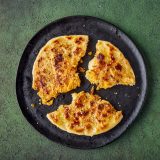No matter where you are in Lahore, you never are far from a naan dukan. And at each of these diminutive bakeries—found on every street, alley and corner, invariably perched alongside a cluster of food shops that need their services—the rhythm is an almost identical choreography that produces hundreds or more tender, toasted flatbreads an hour, many thousands a day.
In most cases, it’s a four-person operation that begins in a back room. There, the first baker hand-mixes vats of pillowy dough from yeast, water, flour and salt, letting it rise before forming it into tray upon tray of palm-sized balls. Those trays then are delivered to the tandoor room, the main area of the dukan, usually an alcove that sits open to the street. At the center, buried in the floor or counter, a massive urn-shaped gas-fired tandoor oven that emits intense waves of heat.
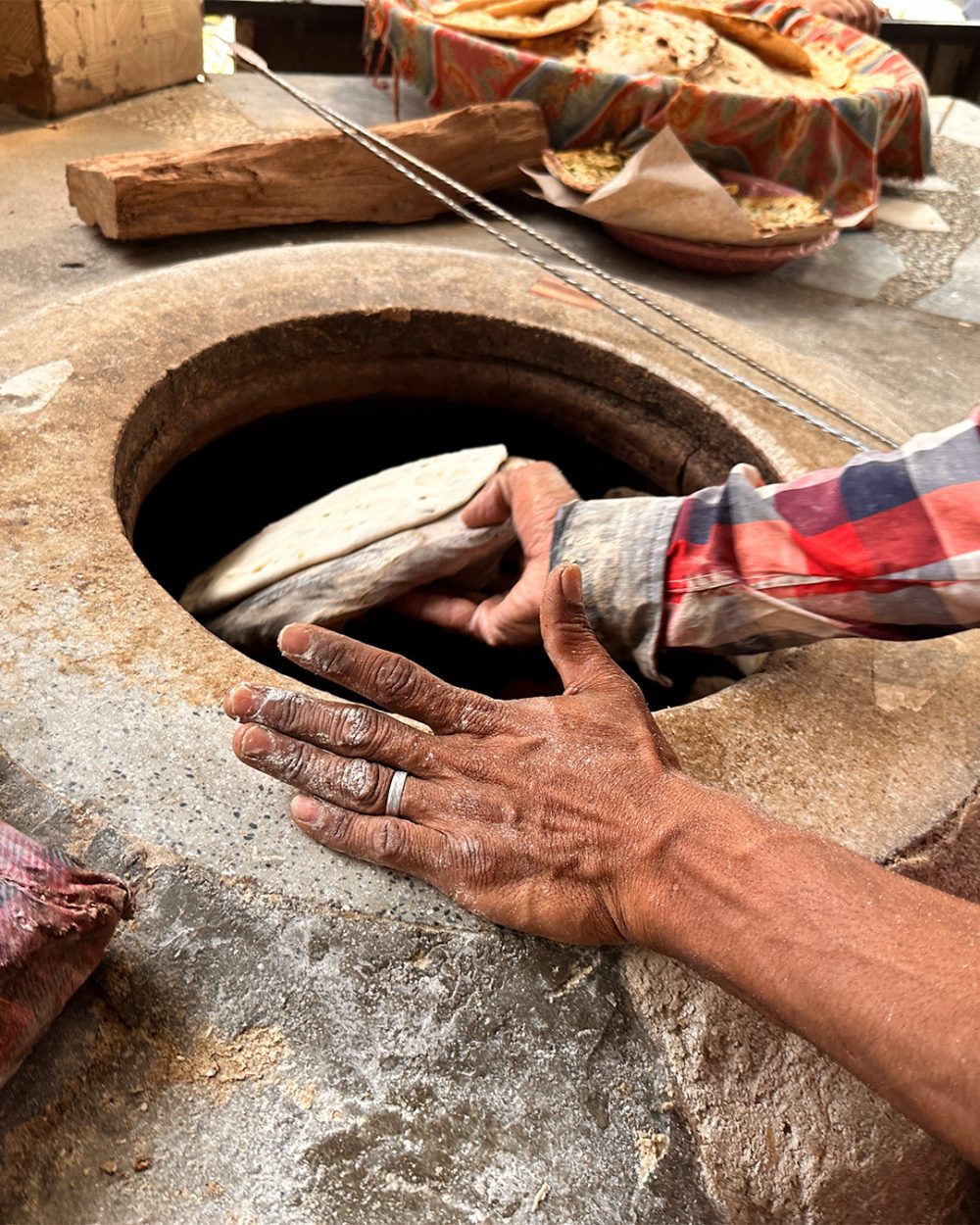
Here, a second person rapid-fire rolls each ball flat, sliding it along the counter to the third, the dimpler. Using fingertips dunked in water, this baker makes innumerable indentations over the surface of the naan, dimples that will help the rounds adhere to the sides of the tandoor while also giving the naan their telltale variegated crispy-chewy texture.
But it’s the final baker where things really get interesting. He—and most are men—carefully stretches the naan, dimples up, taut over a straw-stuffed pillow. In a smooth, swooping motion, he lifts the pillow up, then down into the heat of the tandoor, smacking the bread against the side, where it sticks. Five or six naan go in at a time, cooking in a minute or less.
With practiced ease, he then uses a thin metal prong to reach back into the oven, hooking the breads one at a time and flipping them out, sending them Frisbee-like into a pile. And let me be clear, tearing into one of those freshly baked naan—still scorchingly hot, but you don’t care—is worth the 15-hour flight alone.
Naan are to Pakistan what the tortilla is to Mexico, what injera is to Ethiopia. They are ubiquitous, served at most any meal, where they serve as starch and utensil, scooping up rich sauces and chunks of tender meat. Most dukan do nothing but naan (and their less-leavened relative, roti), existing in a delicious symbiosis with nearby food stalls.
But there are exceptions. Pappa Gee Happy Bhai Food Corner, for example. It’s mostly a sprawling collection of tables and cooktops clustered under sheets of corrugated metal in the parking lot of a police station. Owner Nawab Khan has served upward of 2,000 people a day for 35 years, offering all manner of well-spiced family recipes for chickpeas and meats from 6 a.m. until 1 a.m., all accompanied by their own naan baked in their own tandoor right in that same parking lot.
Another exception? While most naan are the sideshow, a few are meals unto themselves. These stuffed naan—sometimes chicken, often potatoes—are one of Happy Bhai’s specialties. Which is what had me camped out at baker Jawaid Ahmed’s tandoor, where he says he cranks out sometimes 1,000 or more naan an hour during the eatery’s busiest blocks.
I opted for the aloo naan, or potato-stuffed. It began the same as standard naan—pillowy dough rolled flat. But then Ahmed mounded in the center a tangle of cilantro, mint, cooked potato chunks, shredded green and red cabbage and ample sliced red chilies. He then stretched the edges of the dough up and over the filling, pleating it closed like a Chinese dumpling.
After he rolled the naan flat again, the process was the same—dimpling, stretching over a pillow, then smacking onto the side of the tandoor. In just a minute or so, the exterior was crisped, the center chewy and studded with tender potatoes, hits of spice, fresh herbs and still-crunchy cabbage. The overall effect was pretty amazing.
Recreating Ahmed’s aloo naan at Milk Street did require a few adjustments, namely that most of us don’t have tandoors handy. But we found the even and intense heat of a cast-iron skillet did a respectable job. We also tinkered with the dough. In Pakistan, it often is prepared early in the day, slowly proofing for many hours in the heat, a process that produces particularly tender results. To speed that up but get similar results in our kitchen, we added a bit of yogurt.
Delicious and true to the original, no 15-hour flight needed.
Potato-Stuffed Naan
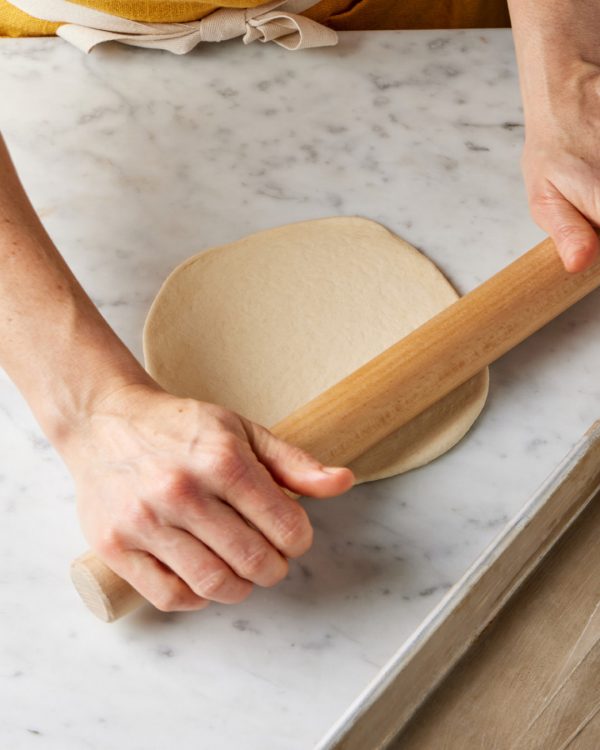
1. Roll out each dough ball to a 7-inch round about ⅜ inch thick. Cover with plastic wrap to prevent drying.
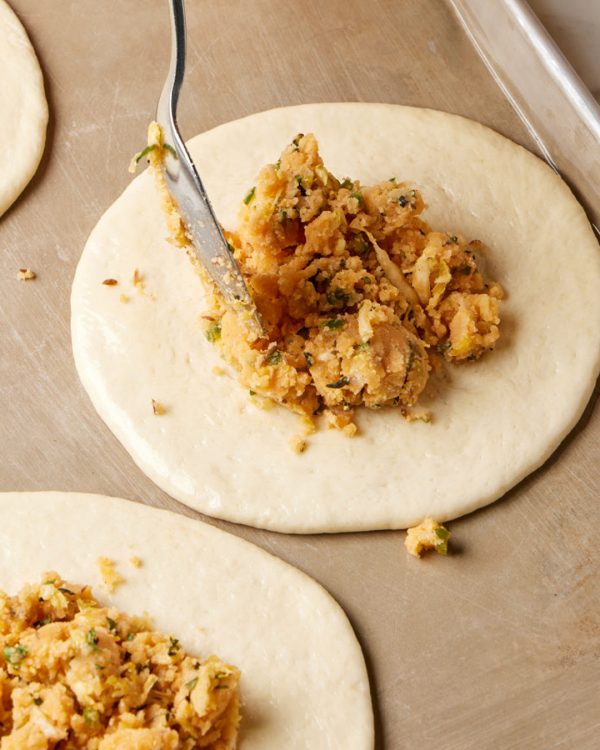
2. Evenly divide the potato filling among the rounds, mounding it in the center of each piece of dough.
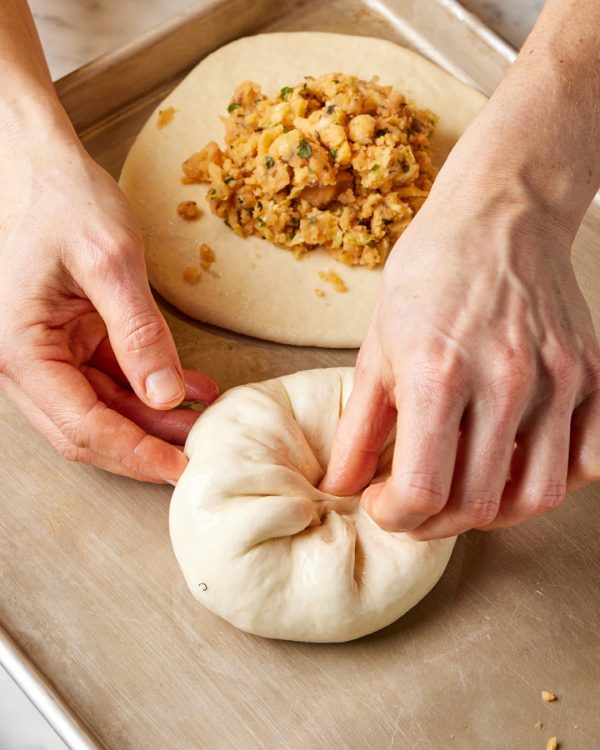
3. Working with 1 round, gather the edges of the dough up and around the filling, enclosing it; pinch the seam to seal.
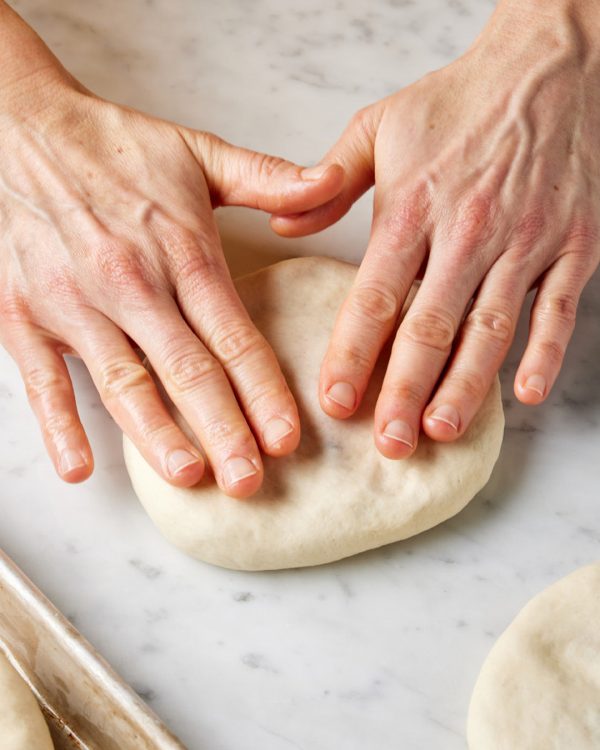
4. Flip each filled dough round seam side down on an unfloured counter. Using your fingers, gently pat each into an even disk.
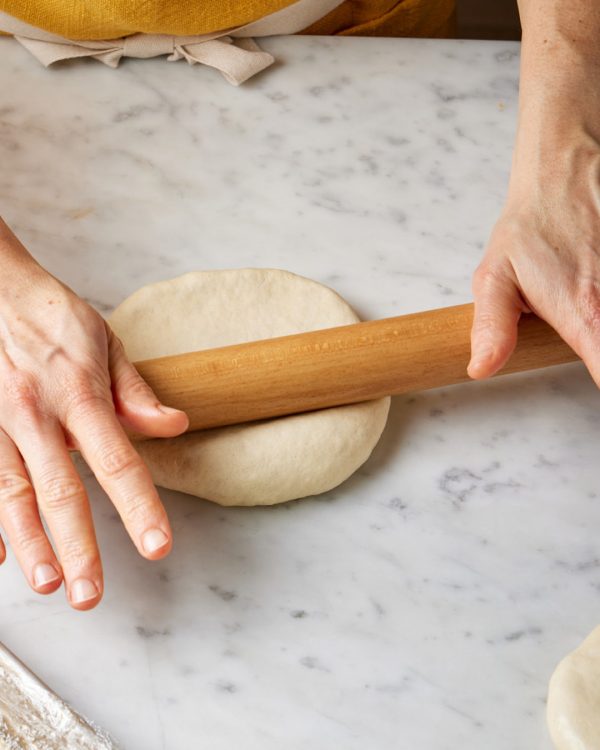
5. Gently roll into a 6-inch round about ½ inch thick; it’s fine if there are small tears in the surface.
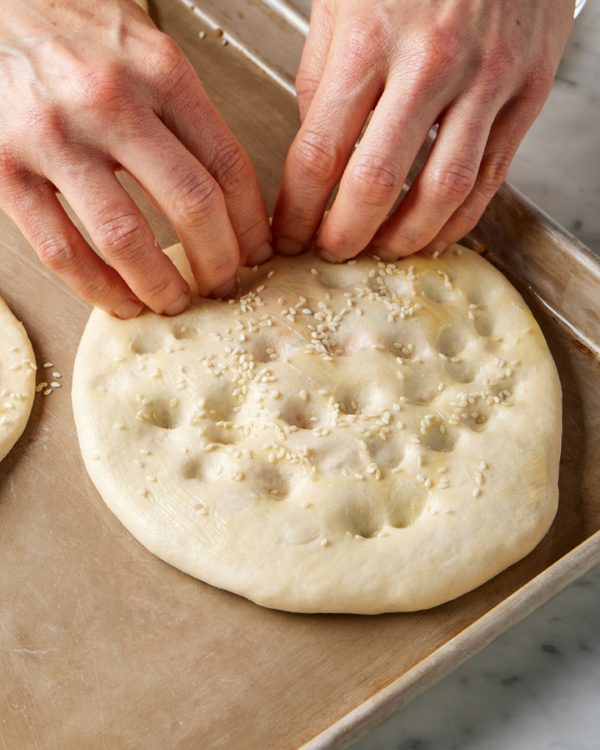
6. Dimple the seeded side of the round by firmly pressing your fingertips straight down into the dough.
